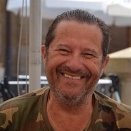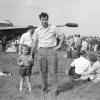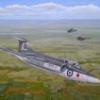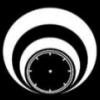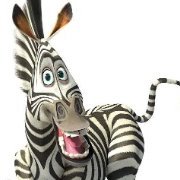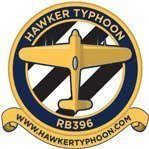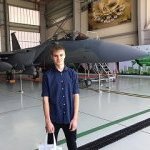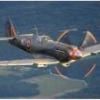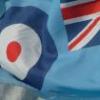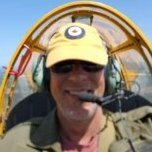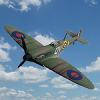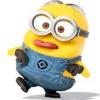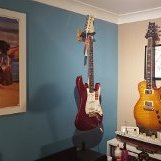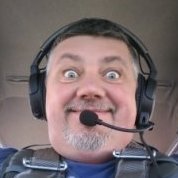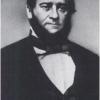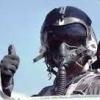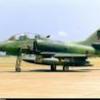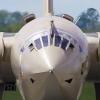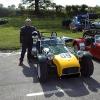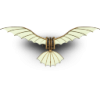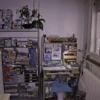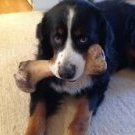Leaderboard
Popular Content
Showing content with the highest reputation on 03/10/17 in all areas
-
BAC Lightning F3 53-692/L 13 Sqd RSAF, Tabuk 1977 Ok so just finished this today and rather pleased with the outcome! It is one of two Saudi Air Force machines they did in camouflage in 1977 - this being the one with the wrap around camo. The other one had a sky blue underside with camo top. It is the Airfix F6 kit and I used Model Alliance decals and some aftermarket for the bang seat. Paints are Tamiya and Gunze and Alclads and I am particuarly pleased with the nose ring as I must have re-done that 10 times to get it right! Chris ty pleased with the nose ring as I must have re-done that 10 times before I got it35 points
-
Hi folks! After the Albacore, it is time to show my Firefly! The first one, with the figurine, was crashed when the shelves of the cabinet fall, so I had to do it again, and that's the second one! Best regards, jean; DSC_0052_2 by jean Barby, sur Flickr DSC_0050_2 by jean Barby, sur Flickr DSC_0049_2 by jean Barby, sur Flickr DSC_0048_2 by jean Barby, sur Flickr DSC_0047_2 by jean Barby, sur Flickr DSC_0046_2 by jean Barby, sur Flickr DSC_0045_2 by jean Barby, sur Flickr DSC_0044_2 by jean Barby, sur Flickr DSC_0002 by jean Barby, sur Flickr DSC_0001 by jean Barby, sur Flickr DSC_0008 by jean Barby, sur Flickr DSC_0007 by jean Barby, sur Flickr DSC_0005 by jean Barby, sur Flickr DSC_0004 by jean Barby, sur Flickr DSC_0003 by jean Barby, sur Flickr DSC_0002 by jean Barby, sur Flickr DSC_0001 by jean Barby, sur Flickr35 points
-
Hi All, Finished up my Tamiya 1/32 scale Mosquito. Had loads of fun building this kit and the precision of Tamiya is amazing. Had some aftermarket extras on the kit, namely Eduards interior and exterior photo etched parts, resin wheels, Nose and Belly guns. Decals are from EagleCal Hope you like it22 points
-
Hi all! The latest in my series of types built in Latin colours. This time an F-80C Shooting Star operated by the 1st Grupo de Combate, Fuerza Aerea Colombiana (Colombian Air Force), and based at Palanquero Air Base. She is depicted as she appeared when participating in “Operación Solidaridad”, which was a joint US-Latin forces exercise in March 1961. At that time she operated with others from Howard AFB, Panama. Other countries that participated were Peru and the USA. This is how she was at that time: The model is the Sword F-80C and is reasonably straight forward to build. Contrary to some reports, it needed little filler but did need some trimming and sanding here and there to get her reasonable. The biggest change from the kit is a addition of Fletcher wing tanks. So, what did I do/use?: Sword F-80C kit Hasegawa T-33A wing tanks. These need a slight mod by bringing the fins forward. They are inaccurate as they come in the kit. Paints were Humbrol enamels – 27001 Aluminium metalcote overall, 209 Fluorescent Fire Orange, 21 Black, 226 Interior green, and others for small parts. Then Mattcote (for the dayglo) and Glosscote (the remainder) Decals were Armycast (for T-33 "Silver Star") plus the kit stencils and home printed serials and codes. The badge (home printed) on the port side was an exercise “zap”. I had no Spanish stencils so used the kit ones. Weathered with Flory Dirt Here she is: I hope you like her. Martin22 points
-
BLACKBURN NA39 Holme on Spalding Moor, 1959 Nostalgia or what? I think I was about 11 or 12 when I first build one of these, having saved my pocket money to find the substantial sum of 4/6 before going into the local Woolies to buy one after school with great excitement. This one was built about 7 or 8 years ago but recently came out for dusting and a photo session. I kept most of the original working features apart from the silly retractable nosewheel (with fixed doors and fixed main gear!) In fact the undercarriage on this one is from the later Airfix Buccaneer S.2 kit. I went a step further and added working airbrakes – Airfix chickened out on this in their kit, presumably because of the complexity. I based the working airbrakes on an article in an old Scale Models magazine which I had intended to scan and post here, but I couldn’t find it! The folding wings lasted a bit longer this time around – back in the early 60s they suffered from too many carrier landings on the HMS Dining Room Table and needed repair after a day or two. Anyway it was enjoyable to build something with a bit of artistic licence for a change rather than bothering about scale and accuracy. Chris19 points
-
Hi, I was announcing that my next finished will be Potez 29 but it is "29", but B 29. I started this model in Christams 2014 and then it was in a kind of freeze... Now I finished (intending to present "Bockscar" while made his atom mission over Nagasaki - so without nose art etc. ): I made both bombs included in box ( abit reshaped and upgrated): "Fat man" and "Little boy" I have to do a kind of stand, but not done yet. Perhaps a trolley, but I do not have drawings for it... Comments welcome Regards Jerzy-Wojtek15 points
-
Academy 1:32 F16 Kunsan, 2005, Col Billy 'Wolf' Uhle I finished this a few months ago but only just got round to figuring out a replacement for Photo Bucket! It is an excellent kit and the level of detail is lovely. It is an out of the box build and I chose the smoked glass for the canopy which works well I think. Paints are Tamiya and Alclads for the exhaust etc.11 points
-
Hiya Folks, I`ve wanted to build a 1/48th scale Marauder Mk.I for quite some time and for a Christmas prezzie last year I received the Lone Star early B-26 conversion from the USA complete with the `Hot Rod Marauders' decal sheet from Red Gecko Productions. This was combined with a Revell boxing of the venerable Monogram B-26B Marauder kit and I began work on the project as part of the Britmodeller MTO Group Build, with the WIP being here for anybody who is interested, which also explains the colour scheme in more detail; Well it was quite a struggle and here is a pic of the main airframe parts together including the new resin outer wing parts and tail; The airframe was sanded smooth and rescribed with the armour from the nose sanded smooth and the rear waist windows filled in and moved further back, easier said than done considering that the Revell plastic was like reinforced steel! A new set of spinners and wheels intended for a P-61 Black Widow were also incorporated into the build. This is the subject aircraft,....which like many of the early 14 Sqn Marauder Mk.I`s bore a locally applied version of the Temperate Sea Scheme for their low level over water armed recce/ torpedo bomber role, consisting of what appears to be Olive Drab and a dark grey such as Extra Dark Sea Grey,....possibly with the original US Neautral Grey undersides. A desert scheme had been applied to these aircraft in anticipation of 14 Sqn returning to its previous light bomber role over the desert, but this was soon modified for their eventual maritime role. The subject aircraft was Marauder Mk.I, FK142/R, `Dominion Triumph' usually flown by the CO Wing Commander Dick Maydwell; Plus another pic in the desert scheme which it was originally repainted into, before the maritime role was confirmed; Here is some colour artwork done by 14 Sqn Marauder crews at the time; Note the camouflage on the drawing; And finally,....at last,....here is the finished model, armed with a torpedo from a Tamiya Swordfish and mounted on a scratch built mounting; Sorry for so many pics,.....but I hope that you like it, I`m certainly pleased to have added this to my collection and finally finished what was a very demanding conversion! As usual with my models, this was brush painted, using a mixture of Tamiya, Polly Scale and Aeromaster acrylics , All the best Tony PS,.....here it is with its little 1/72nd scale brother, built as FK375/D `Dominion Revenge';9 points
-
Hi, Next odd German - Messerschmitt Me 321 B-1. Winter camo from Crimea (EDIT: according one source, accordingly to another from Smolensk area), 1943. Configuration - almost ready for take off. The W6+SW - decals from box, but in box the summer scheme is presented. Modification of kit is in front wheels, which in kit are single and on photos they double and in bottom of fuselage (which is flat in model). I thought, that I will give some lead to nose, but I measured it and it should be about 330 g. I quit, since it will perhaps required many enforcement of whole model and especially wheels. Comments welcome and regards Jerzy-Wojtek8 points
-
hello again folks Having finished my 1/18 Spitfire XIV, I am hooked on the scale as it allows me to go nuts on detailing and get a scale effect through skinning with metal, so after a bit of deliberation I have settled on my next victim... ...you don't see many of these, in fact none in large scale (yet) and I like UK prop aircraft so I settled on the Fairey Firefly - they don't come in natural metal finishes which I like as it shows off the metalwork, so the nearest I could find is this bird a TT5 VX376 seen on 29th Feb 1956 - Pilot: S/Lt Mike Thorne, Observer: Lt Jones, Duty: Townsville to Cairns & target towing for the 1st Frigate Squadron... ..it is near enough NMF for me, this one, sister ship VX388 is in Steve Long's care in Oz and shows the sort of anodised looking finish - it is probably paint, but either way I still think I can work with it, and if worst come to worst I will just paint it . I may well do VX388 as you can't have better references than a real, and more importantly unrestored example.. ..the first step in any project like this is good plans. I intend to scratchbuild it using traditional methods so a good outline & section plan is a must. I found some fantastic 3 views with sections by Jumpei Temma whom I trust as I used his work on my 1/24 F7F Tigercat... ..I had these scaled to 1/18 - here seen with my laptop - as you can see she is a big girl - 64cm span and about a third bigger than my Spit... I have two more sheets not shown that detail the undersurfaces & the fuselage & sections... ..the next step is getting repetitive strain injury by right click & saving every image on the internet I can find - some are real quality shots like this of VX388 - I can reproduce everything you see here, but cut some corners as will be seen.. ..once references have been started I can start to work up a Photo-Etch sheet for the model - I did thsi for my Spit and F7F and it means many, many parts that would be difficult or time consuming to make can be 'drawn' in at about 5 - 10 minutes an item - some are obviously more complicated, but simple things like hatches, brackets, instruments, radiators all sorts of stuff can be made. It just takes a bit of basic PC skills with a drawing program like CorelDraw (subscription @£22 a month, drop in & drop out whenever you need it) - I learned all I know with this and Rhino 3D modelling from Youtube videos - it really is straightforward.. making a PE fret has a couple of rules I may well do a quick tutorial on, but basically you just draw things in layers - things you want full thickness & things you want part etched - anywhere you can see through is just dissolved away. You also need to tag things to a frame so they don't just float away on theor own.. ..so here is a bulkhead where I have started to trace it's outline and add detail to.. anything in blue is half etched - that is to say it disolves away half the thickness of the sheet, anything in yellow is full thickness - the metal is left untouched.. you can see I set the shapes to be transparent so I can see what is going on in the original pic - it is just like tracing... ..while this kick-off post doesn't have any actual building yet, I have spent about a week so far drawing up structures & components that will be used later on.. ..for example the instrument panel - there are two as one is a backplate the detailed one fits onto, as they are copies of each other they always fit perfectly ..lots of assorted parts including throttle & prop controls, compass mount and loads of internal / external hatches & brackets.. ..the Observers station - bulkheads & surrounding structure.. ..the pilot's bulkhead is actually three layers of structure to get the best level of base detail before all the framework is added... ..another cheat for complicated or uniform parts when scratchbuilding or converting is 3D modelling - this is a wheel from my Spitfire done on Rhino -again a 3 month trial is available with the software which is enough to learn the basics, and get a few parts done - I will likely repurpose this for the Firefly as it has four cut-outs in the middle not 3 and has block tread not diamonds, but wheels & the prop spinner are pretty straightforward parts to design using a 'revolve' surface tool.. so that's it for day one - I think it's about a 2 year build and it is an aircraft I think will really have presence when completed. I am always looking for close up internal reference pics, or drawings so please, if you find anything drop it in here or PM me I look forward to your company on the way, and while it is not as beautiful as a low back Griffon Spitfire, I hope it is engaging enough to keep us entertained TTFN Peter7 points
-
The old Tamiya kit. Tracks are from Academy M3 Grant as original were missing from the kit. Added metal barrels and Eureka tow cable. Now there is new Takom on the market and probably won't be to many occasions to see this kit again.7 points
-
It's rubbish for shoes though... With my penchant for surgery there's every risk that it would turn into the Island of Dr. Moreau. There would be a single horrifying RFI followed by a permanent ban, Interpol, and lurid headlines in the Daily Mail. None of us would really want that Tomo... I did buy some EZ line. Where did you find that btw - it's most beguiling! Time and events: the best cutaways imho... Steady men. We're not quite there yet! I must give the airbrush a quick valet: I'd made some modifications to it over the summer and the action's a hell of a lot smoother now. Tonight we shall be mostly making wishbones: ...or more exactly the symmetrical truss that curves up diagonally from rear to front of the motor room, following the contour of the walls.This is 0.8mm brass tube, annealed on the cooker to help with bending.I then sandwiched these together to ensure that both sides were identically curved. Initially I tried using my bending jig but this had nowhere near the necessary diameter that the job required, so a Tamiya tape dispenser turned out to give the required curve to the tubes in the end. Amazing how you can have a dedicated tool for something and yet you end up improvising from something entirely unconnected with such a job... These two lengths were then soldered into place, joined at the bottom by some brass scrap to match the connecting part at the bottom of the truss: Thence the cross-members and diagonals were added using some low temperature solder so that a momentary dab with the tip of a hot iron was enough to melt these into place without disturbing the surrounding joints: I was a little over-generous with the amounts of solder as you see it there, so these blobs were then filed down by the required amount: Seen temporarily in situ inside the motor room, you can see that although not a lot of it will be seen, it is a necessary addition being so prominent a detail: The next step in this chain of events then is to commence reconciling all these bits to each other within the confines of the gondola: Expect a tad more in a couple of days. Tony7 points
-
fine works on your FR9. I advanced mine a little When I cut the canopy, I made some cracks on the rear part. I forced to use the other part and sanding it to erase a panel line. But after polish it, all was ok I paint the air-intake and the nose with a white/black checkerboard. After I can spray a varnish to set the decals The MPM decals is always so fine. It does not remain any more to paint the landing gear and their panels and my models would be finish7 points
-
Here's my Xuntong 1/48 Tupolev Tu-2S, built in the Radial Engines Rock group build. WIP is here. This was mostly from the box, the only aftermarket were resin wheels from Armory and props and spinners from Quickboost. It's quite a nice kit and an impressive size when done, it's got some nice detail, but quite fiddly in places, whilst others are pretty sparse and ripe for detailing (wheel wells, bomb bay, interior walls and floors are all pretty plain). Overall, a fairly satisfying build, but there are a lot of small, fragile parts that are a little more frustrating to deal with than they need to be. thanks for looking Z7 points
-
What a kit by Kinetic. Usually over engineered and far too complicated this kit is sublime. With superb detail at every level and great decal options you cannot go wrong! The only let down with this kit are the instructions. They are poorly printed and leave you guessing on some stages! This is an out of the box build with the only addition being the eduard cockpit set. The paints are Hakata blue line Russian ST set and Vallejo and MIG metal paints. The base is Coastal kits display bases Admiral Kustinovof's deck..6 points
-
Hi everyone, just recently finished building an academy F-22A. Here's what she looks like- Tell me what you think. Cheers6 points
-
Morning All, I've finally finished my P-51B in 1/72 scale. It's a Hasegawa fuselage mated to a KP wing, in an effort to circumvent the problems that many P-51B kits suffer from in this scale. Brings my output for this year to two! I had fun making this. The first two attempts were aimed at correcting the KP fuselage but in the end I opted for the kitbash approach and I'm not unhappy with the result. I might even make another, now I know what to do. For anyone who's interested, there's a WIP thread here: The sliding part of the canopy is from Squadron. Paints are Tamiya Olive Drab and Neutral Grey, Lifecolour white for the racing stripes, and Humbrol enamel 153 for the red. The final varnish is Alclad Klear Matt, and one week after application it's still slightly tacky. Decals are Superscale, with the code letters coming from the LPS set for Hively's P51D - I thought they looked marginally better than the Superscale ones. I used the KP horizontal stabilisers as l liked the fabric effect of the elevators much more than the Hasegawa ones. I also used the KP cockpit parts in the Hasegawa fuselage and they fitted well. One other minor change was the repositioning of the outboard guns slightly further inboard. And I extended the length of the fuselage by about 1.5mm at the base of the fin. The WIP has details. I chose to model Hively's The Deacon as I was brought up not far from Debden where the 4th FG was based during the Second World War. I wanted a 4th FG machine in Drab/Grey with a Malcolm hood that I could display open, and I was intrigued as to why Hively and his aircraft were dubbed 'The Deacon' (still don't know the answer). Hively had flown with 71 (Eagle Squadron) RAF from Debden even before the 4th was constituted, and after 71 Sqn became 334th FS he remained with the Eagles throughout the war. Once the invasion stripes were added on 43-6898, Hively flew The Deacon 3 times on D-Day but for the fourth trip his aircraft was taken over by Mike Sobanski, a Pole who had taken US citizenship and joined the 4th FG. Sadly Sobanski was shot down and killed with the rest of his flight that evening, when they were bounced by a group of Fw190s. Hope you like the model; here are some initial photos. Justin6 points
-
Hello! This is a realy early of my airbrushed kits, it was made back in 2007. Next to it, You can see an even more older one which was used for tests in the meanwhile. The first time when I used resin upgrade and mark softer. Mr. Pilot from Airfix RAF personel.6 points
-
Hi Pip Thanks for your concern and kind comment. You can knock yourself out over the various permutations and FS values attributed to the under surface colour, sometimes inconsistently over the years. The single fixed standard was reportedly J3 Grey/Grey-Green and that designation didn't change until February 1945 when it was re-designated as 2-6 which was an exactly similar colour. The different FS values are more variations on a single theme, driven by variance in aircraft/paint manufacturer, batch, age, weathering and, it must be said, different perceptions of colour. Trying to sort them out is akin to trying to pin down the differences between, say, Avro and Handley Page applied Dark Earth at different stages of the war. The IJN HQ Proposal for Revisions to Aircraft Planning Procedures (Hikoki Keikaku Yoryosho Kaitei-an) of March 1944 included a table of standard colours and codes from Kariki 117 which specified the upper surface paint colour to be D1 An Ryokoshoku (dark green) and the lower surfaces J3 Hairyokushoku (ash/grey green). That was a change in terminology but not designations from earlier (1942) documentation where D1 was described as deep green black colour and J3 as simply grey. However, such inconsistency in terminology is rather typical. Some samples of the late war green paints appear close to the slightly greener D2 (green black colour) so that has been cited as standard for the A6M5. It has also been suggested that Nakajima applied paint to the D1 standard and Mitsubishi to D2 - or vice versa! But with all the variance factors involved that begins to get academic and again the evidence from extant samples is inconsistent. The difference between D1 and D2 was addressed by Tamiya when they released the lighter and greener XF-70 Dark Green 2 (IJN) to supplement their earlier XF-11 J.N. Green. Personally I think that XF-70 is a little too light and green to represent D2 but notions of scale come into it. The actual J3/2-6 standard has been variously perceived over the years, everything from being similar to FS 36307, through a neutral grey with a faint yellowish undertone, to FS 16350. The standard chip is now a little darker than FS 26307 (the original paint had lustre and was not dead flat) but applied paints tended to be warmer, more yellowish with a fugitive green undertone (caused by black and ochre pigments) and chalked/bleached to lighter neutral or slightly blueish greys. Stored away from light the original paint samples have become slightly darker and browner. FS 26307 vs 36357 is within the up to 5.0 variance typical of wartime applied paints and 16350 when lightened moves towards the same ballpark (bearing in mind that in FS '6' is the designator for Gray). For those who like dabbling in oils the character of the paint colour can be replicated by mixing titanium white with a little black and yellow ochre. The resultant "putty" colour is immediately "right" but difficult to describe! Regards Nick6 points
-
Just started this one last Thursday. It will be totally Out Of the Box and will be built wheels up and on the included stand. I built the F4U-1A Birdcage http://www.britmodeller.com/forums/index.php?/topic/234958333-132-tamiya-f4u-1-corsair with the cockpit open, wings folded and flaps down etc. so I've done that once. The cockpit is painted as recommended in the instructions using Tamiya paints mostly and a bit of Vallejo here and there for coloured knobs etc. The gun sight is still to be added and there is a PE harness to go over the pilot's shoulders. This is my first pilot in a while and certainly first in this scale. I hope he looks good to you to because I think I'm done with him (I fixed the yellow boo boo on his arm). BUT I would appreciate any hints / techniques on how to improve his looks for the next time. I will post updates going forward and I hope to have this finished within the next 10 days or so (SWMBO willing). Cheers for now5 points
-
For my next project I have decided to do something outside a GB again. Last year, I realised, every build I had done had been done as part of a GB and so I promised myself I would do more kits outsdie GBs this year. This will only be my second but, I started the year with a non-GB project and I'm going to end the year in the same way. Having recently built two Shermans in GBs (Meng's Toon Sherman in the Blitzbuild GB and Dragon's 1/72nd M4A1(76)W VVSS in the Radial Engines Rock GB) I was initially thinking of making another Sherman in the same GB. I then realised the M3/M4 GB starts at the end of this year and felt I might get Shermaned out. I thoroughly enjoyed building Dragon's 1/72nd Sherman so thought I could risk trying my first 1/35 Dragon kit. Having looked at the few I have in the stash I opted for a smaller project first: I got it a while back in Ian Allen's Bookshop in Brum and, having looked at the contents, I reckon it was a bit of a bargain: I know it sometimes retails around the £40 mark but still........ Back of the box: and the sides: All of the versions this kit builds in to appear to have a worn whitewash finish so this will also be a first for me. So, as usual, I'll start with some photos of the contents: Sample of the instructions: The plastic - and there's a lot - although if you check out the first instruction page above you can see stuff not used in the blue blocks: and 2x these: Lower hull: Turret: Tracks - these are the Magic Tracks but there are two ejection marks on each piece - which is a bit annoying: Photoetch and decals: Clear parts: Some closeups of some details on the lower hull: Over the weekend I had a lovely time assembling parts onto the lower hull: Including the first couple of pieces of PE: Fit has been mostly very good although the instructions leave a little to the imagination. Some of the diagrams do not show the whole picture which results in a bit of guesswork here and there. I have been using Brian Krueger's review from IPMS/USA to help me as he has lots of very useful suggestions of what to look out for during the making of this kit. There are some seam lines to remove on some parts but no flash so far. Speaking of seam lines - I also started work on the running gear wheels - all of which require the seam lines removing from the centre of the tyres. More next weekend when I will hopefully be getting the painting started. Comments and suggestions welcome. Kind regards, Stix5 points
-
5 points
-
Well, took the plunge - touched up and re-worked the band with some paint rather than to strip it off and start again. So - out with the tamiya basics. White to lighten the blue and yellow for the red. (Red looks better faded to orange than pink to me) In the pic you can just make out the white bits of the decal where it has been sanded through and smoothed out. Blue being done. Mixed by eye, first shade was a tad dark and thick to cover the white. After each pass it was rubbed back with some 4k micromesh. Beauty of enamels and cellulose thinner. Next a thinner and lighter shade of blue afterwards to fade and blend. Masked off for the red - And done! Tidy enough I think. The zoomed in pics show every mistake Next was adding some of the 81 & 82 camo shades over the edges of the band, as stated on the airfix sheet, so it was back out with the colourcoats. Again thinned with cellulose for the touch ups. Just need to micromesh the stripes to clean them up from the green. Quite pleased with it now - Thanks for looking 👍🏿5 points
-
Well after a lot of masking and a little bit of painting the upper surfaces are pretty much complete. Instead of the Tamiya NATO black I said I was going to use for the black areas of the camo scheme I decided to use Gunze tyre black which worked really well, which you will have to take my word for as I didn't take any photos! Next job was to apply some white over the black (hiding it nicely!) for which I again used Gunze and it went on very nicely but took a few coats to get a colour density I am happy with, probably because it's covering black. Anyway apart from a few areas which require touch ups (there are always some) the main painting is pretty much complete, here is a picture of how she looks at the minute; And a closer image of the main area of the upper wing showing my attempt at shading; After completing the touch ups I will start the decalling and then the weathering. That's it for today so thanks for looking in and as usual all comments and criticisms are gratefully received. Craig.5 points
-
Sukhoi Su-34 Fullback Italeri 1/72 This is a bit of a blast from the (not to distant) past. It's the first model I built on getting back into the hobby in early 2012. At the time I hadn't really built a model in 20+ years apart from a couple of AMT Star Trek kits in the mid 90's and this build marked a number of firsts for me. 1st time using an airbrush, 1st time using acrylic paints (Vallejo in this case), 1st use of Alclad and 1st time using an after market etch set (although in the end, I hardly used any of it). I was aware that there were a few issues with the kit but I didn't want to get bogged down with trying to make corrections when this was the first aircraft I'd done in 22 years, I just wanted to get it done without making a complete pigs ear out of it. In the end I did make a few additions, mainly the door in the rear cockpit bulkhead and a crude attempt at the boarding ladder on the nose gear. The colours are pretty much approximations and far from accurate but at least it looked like a Fullback (just about) and the main thing was I enjoyed the build immensely and it hooked me back on modelling. I'd like to think I'd improved a little since then and I'd certainly do some things different if I built another but it's still one of my favorite builds and sits right in the middle of my display cabinet Hope you enjoy the shots Thanks for looking Andy4 points
-
Academy’s new tool 1/72 F-15E. By now we’ve all see and heard of the terrible exhausts. That’s really the only huge drawback. I remedied that with the Aires nozzles. Easy peasy. I added a GBU-31 JDAM, GBU-12 Paveways and a an AIM-9L, but everything else was OOB. The fit was excellent, absolutely NO filler was used in this build. Solid 4-Star kit!4 points
-
Finally, after 4 1/2 months of joy, pain, money, hair pulling and rows with she who must be obeyed I have finally finished my first model! Pretty happy with how this turned out. More than a few errors but nothing that stands out unless your nose is touching plastic! The kit was ok but nothing special. Lots of flash and quite a few badly fitting parts as well as accuracy issues but not an absolute dog either. Few scratchbuilt parts including the masts, additional and revised rigging, extra detailing on the forecastle deck and bridge. Hopefully i've addressed a few of the accuracy issues but many remain. Still, it looks a lot like the Titanic. And i'm glad of that because the ship was a beauty! The WIP: Some pictures of the model... Generated from my Apple iPad using tools.rackonly.com Generated from my Apple iPad using tools.rackonly.com Generated from my Apple iPad using tools.rackonly.com Generated from my Apple iPad using tools.rackonly.com Generated from my Apple iPad using tools.rackonly.com Generated from my Apple iPad using tools.rackonly.com Finished Titanic by MikeGBlues, on Flickr Finished Titanic by MikeGBlues, on Flickr Finished Titanic by MikeGBlues, on Flickr Finished Titanic by MikeGBlues, on Flickr Finished Titanic by MikeGBlues, on Flickr Finished Titanic by MikeGBlues, on Flickr Finished Titanic by MikeGBlues, on Flickr Finished Titanic by MikeGBlues, on Flickr Finished Titanic by MikeGBlues, on Flickr Finished Titanic by MikeGBlues, on Flickr Finished Titanic by MikeGBlues, on Flickr Finished Titanic by MikeGBlues, on Flickr Finished Titanic by MikeGBlues, on Flickr Finished Titanic by MikeGBlues, on Flickr Finished Titanic by MikeGBlues, on Flickr Finished Titanic by MikeGBlues, on Flickr Time for a break and then it's onto some aircraft...4 points
-
Dragon M4A1(76)W VVSS 2nd Armoured Regiment - Polish 1st Armoured Division - Holland 1944 This was my entry in the Radial Engines Rock GB. It followed hot on the heels of my Toon Sherman in the Blitzbuild GB It was actually a really enjoyable build and I reckon the details are really nice for this scale. The M4 Sherman was the most numerous medium tank used by the United States and some of the other Western Allies in World War II. It was found to be generally reliable, relatively cheap to produce and available in great numbers. Thousands were distributed through the Lend-Lease program to the British Commonwealth and Soviet Union. It was named after the American Civil War General William Tecumseh Sherman. The M4A1(76)W VVSS Sherman was fitted with the Continental Wright R975 Whirlwind 9 cylinder radial gasoline engine. The WIP can be found here. Some on my Spitfire display shelf with grass matting: Finally I made a bit of a display base using a small picture frame from Wilkos as a starting point: And then, surprise, surprise - I took some more photos of it on this base: And did I mention that the model is quite small? It's the 1/72nd Dragon Kit: And finally - one with the Toon Sherman: Thank you to the host of the GB and everyone who took the time to comment in my thread. As usual I will post some black and white images when I get chance. Comments and suggestions welcome. Kind regards, Stix4 points
-
Finding myself stuck in the USA for a coupe of weeks, I thought to remind you guys I’m still alive by posting the wip of a model I built a few years ago , quite different from the other projects posted up to now, like the F-15 or the two Jags I’m actually building: the Eduard Airco DH2 1/48. Hope you’ll like it! Once upon a time plastic models meant Airfix and modelling magazine meant Airfix catalogue! Paint meant Humbrol and glue meant Britfix, in a white and yellow tube. I remember going through the catalogue and dreaming about models I could have never afforded. My best friend’s name was Fabrizio.We were school mates and lived in the same building. His father worked in a bank and could afford Series two and more! I remember on a Christmas he got 1/24 Spitfire and…I went on dreaming!!! Ok, that’s enough, back to the subject. The only biplanes I remember to have built were Airfix Series 1 Fokker DR1 and Sopwith Pup, which at that time came into a plasic bag… A few years have gone by and now I have another friend whose name is Guido. He works in a bank… He’s a very good modeller and I hope he’ll join BM soon or later. One day I got a present from him: this… http://i61.tinypic.com/2vnl1xv.jpg[/IMG] This present wasn’t really a surprise, as it followed several discussions I had had with Guido previously about biplanes, canvas effect on wings and the beauty and peculiarity of the DH2 as a project. Guido had it on his stash and decided to give it to me. Thanks Guido!!! For somebody who’s never built a biplane and never experienced the joy rigging can bring, it was a bit of a challenge, but I loved the subject, so different from other biplanes, that I couldn’t resist and got involved with it straight away. Opening the box I got caught immediately by the offering, so different from the contents of those plastic bags I remembered: three sprues full of parts and a reasonable decal sheet,considering that at that time stencilling was kept to a minimum. A photoetched fret and masks for painting the model. I got started immeditely with the fuselage halves, removing the moulded detail to be replaced by PE parts. To represent the canvas effect, I used an old curved blade to scratch the plastic in two crisscrossed passes. By using a scriber, I also did a few lines in the corners to simulate the canvas curls To smoother the scratched surface, I used Tamiya green cap liquid glue, which melts down all residues. I drilled the step and finisced it with needle files. Next were the wings.I cut the ailerons off and re positioned them slightly angled and went on with the scratching process. https://i.imgur.com/9ZoZsCZ.jpg[/img] This was the end result.Might be overscaled, but, at the ime I built this model, I thought that was what I was looking for!!! Dry fit with the fuselage haves. Next I drilled some holes to fit some attachments for the rigging made of thin electrical cable, locjìked with a touch of CA at the wing’s back. I then fitted the PE actuators to the ailerons and to the tail. (is it their correct name?Forgive me if it’s not!) To the PE seat, I added some twisted cables on the borderline and a couscion. Canvas parts were painted using Gunze Radome Then thin strips of Tamiya tape were cut to cover the wing internal structure before spraying Tamiya smoke along the lines and a second layer of Radome, once removed the tape strips. This is the top wing’s underside ‘s final result. Then, after masking,the top was painted green. https://i.imgur.com/xZiM36E.jpg[/img] https://i.imgur.com/PX7WH6l.jpg[/img] Then it was the lower wing and tail elevators’ turn, following the same procedure. After the lower wing and tail were paintd green, softly sanded with Micromesh to get the green colour a faded shade, and highlight the skeleton, a layer of Future was given and decals were applied, followed by another layer of Future and finally a flat coat. That’s all for now. Ciao Massimo4 points
-
Not a 109! But two Fairey Albacores. One is gone when my shelves tumbled down some years ago destroying about half of my collection! So here is a mix of both models! Cheers. DSC_0006-1 by jean Barby, sur Flickr DSC_0001-5 by jean Barby, sur Flickr DSC_0008 by jean Barby, sur Flickr DSC_0007 by jean Barby, sur Flickr DSC_0006 by jean Barby, sur Flickr DSC_0005 by jean Barby, sur Flickr DSC_0003 by jean Barby, sur Flickr DSC_0002 by jean Barby, sur Flickr DSC_0001 by jean Barby, sur Flickr DSC_0005-2 by jean Barby, sur Flickr DSC_0004-4 by jean Barby, sur Flickr DSC_0003-2 by jean Barby, sur Flickr DSC_0002-2 by jean Barby, sur Flickr4 points
-
Some more progress... The MkVb has had a gloss coat over the decals: The MKVII and MkIX have been masked in preparation for PRU Blue being splashed on: Note the guest appearance from my entry in the Floatplanes & Flying Boats Group Build. Thanks for looking.4 points
-
This might not be new to some of you, but found this while looking for something else- natcherly! Great period color and b&w photos of B-50's. I hope you enjoy them. Might have to change my mind about doing the Academy kit's box art scheme! Mike http://www.angelfire.com/dc/jinxx1/97thBW/97thBW.html4 points
-
4 points
-
Coming down to the end of it here...I have finished up the large pontoon as much as I wish, have attached the stabilizing pontoons and have rigged the little water skipper with EZ Line. For the drainage ports, I used a little thinned light green paint to simulate a bit of verdigris and then a touch of rust weathering which gave the ports a brassy tarnished effect. Knowing what little I do about boats and water craft I made the leap that these areas would be made from brass or copper, not steel. I also added a loop at the tip to run a line through when securing it to the dock. I have seen this is in the photograph. I also touched up the landing gear in a similar fashion. It just gives to some depth more than anything else. Now..the trolley. Simple. A bit of Evergreen card, cut in a round then 'triangles' off a bit with some round tube stock to be the little caster wheels underneath. Painted dark grey with a little rusty wash... sorry boys. I am not going to make real caster wheels this size at 1/72nd. Some of you might, I am not one of them. Next up...she heads into the gallery for the finish!4 points
-
I bought this just after it came out, earlier this year, but it has been sitting on the to do pile as a couple of modelling friends said it was a tricky build. Anyway I thought I'd give it bash and gosh what a surprise, it was a joy to put together. After last years Defiant, I thought Airfix could get no better but the Stuka literally clicked together. I used the merest smear of filler to repair a scar where I had been clumsy removing the part from the sprue and though there are ejector pin marks on the inside none are visible after assembly. I don't normally like to have my aircraft with their innards on display but the engine was so lively that I thought I'd give it a go. I don't know how the kit assembles with the cowlings in place of the engine but that's for the next one. I did have trouble fitting the rear bulkhead which did need a lot of sanding, I also have a large bag of spare parts, probably about as many as I used to finish the kit. I used some ROP decals to finish her as a machine of 8/St.G51 I've always wanted to do a Stuka in this scheme with the comet tail since reading a book on the aircraft of the Battle of Britain in about 1970!. I know the actual markings are dated for the French Campaign but thought it might till be carrying them later. I have built a number f Hasegawa B-2s and converted a couple to B-1s using resin conversions, but this is a class above those kits. I hope you see that I am very impressed with kit. Thanks for looking4 points
-
Bad luck, Crisp! This sort of thing is why I quickly dispensed with Vallejo. Better to die young from enamel fumes than this.4 points
-
OK, cracking on in traditional fashion, it's the flight deck. I have no reason not to follow the all RLM02 paint guide, with black instruments and dark green fabric surfaces, in this area. The basic structure is built up from the floor, two small sidewalls, two bulkheads, and an IP/bulkhead: The coloured dials and buttons are utterly fictional. The brown dirt wash is courtesy of AK's Exhaust Wash, but I'll tone it down a bit around the doors before adding some wear.4 points
-
Hi gents, since the new IBG Models kit is just fab so I could not resists my temptation to build it asap. So this is the finished article built OOB except few small mods to the base kit. The markings were sourced of my decal bank and the kit represents the Karas I No.2, one of the longest serving machine of this type in the Romanian Air Force (struck off charge in 1948). I believe there might be soon a reboxing with Romanian marking by IBG too, hope they will include some of the late-style camouflage colours. Cheers Libor3 points
-
Hi all, So this is my latest finish, Revell's 1/72 Hawk T1 in Red Arrows scheme for the recent 'Made in Britain' GB. The build thread is here and the kit is 100% out of box with the kit decals. Like all my builds, this one is brush painted and happy with how it turned out. Revell_04921_Red_Arrows_Hawk_Done (11) crop by Dermot Moriarty, on Flickr Revell_04921_Red_Arrows_Hawk_Done (6) crop by Dermot Moriarty, on Flickr Revell_04921_Red_Arrows_Hawk_Done crop by Dermot Moriarty, on Flickr Revell_04921_Red_Arrows_Hawk_Done (5) crop by Dermot Moriarty, on Flickr Revell_04921_Red_Arrows_Hawk_Done (3) crop by Dermot Moriarty, on Flickr Revell_04921_Red_Arrows_Hawk_Done (18) crop by Dermot Moriarty, on Flickr Revell_04921_Red_Arrows_Hawk_Done (2) crop by Dermot Moriarty, on Flickr Thanks for looking! Cheers, Dermot3 points
-
For a change from my more recent space and airliner builds, I thought I'd return to a theme I haven't tackled for over 30 years i.e. The Vietnam War. I've started watching the new PBS Ken Burns documentary and it's inspired me to tackle a subject related to that sad and sorry conflict. One of the aircraft closely associated with the Vietnam War is the Republic F-105 Thunderchief. It was used extensively during the conflict as a fighter bomber and quite a few were lost. However, being from the Republic stable, they were tough birds and many made it home despite substantial damage The kit is one I've had in the stash since the mid 80s I think so it's about time it was tackled. Although it is from Hasegawa, it is one of their earlier kits and dates from 1966. It therefore lacks a lot of the finesse we normally associate with more modern Hasegawa kits. It also features raised panel lines - although the rivet detail is recessed. As you can see from the pictures below, there are not that many parts. You can also see that I did, at one point, make a start on painting the pilot figure, who comes integrally moulded with his seat. That certainly gives the kit's age away. I am minded to drop the pilot (apologies to any Joan Armatrading fans) and fabricate a seat out of plastic card. It will be painted in the USAF South East Asia camouflage scheme similar to that on the rather nice box art - although I plan to use some old Modeldecal sheet which depicts an F-105 that was actually based in South East Asia during the conflict. The kit decals are for a post Vietnam War aircraft3 points
-
Returning to modelling after nearly 40 years. Felt I had earned the right to join the forum following the spilling of a full bottle of Tamiya Extra Thin over the dining room table, much to the wife's chagrin.3 points
-
Here is my Dragon 1/35 Porsche type 205/2 "Maus". - Added Eduard photoetch grills, fuel tank bracket and straps, ladder etc. - Added wiring for headlights, plumbing for external fuel tank - Paint scheme from photographs of prototype - Added welding detail on hull top/side skirt joints - Added tow lugs on rear hull - Painted with Tamiya acrylics, weathered with pastels and oils Hope you like, Colin Here's an interesting size comparison, both 1/35 ... The Maus turret is actually larger than the Stuart! Cheers, Colin3 points
-
Nice legs as usual Bill This democracy stuff works well Bill, we just keep on voting, voting, holding referenda and elections until we get the result we want. I had a vote just now - 100% turnout and 100% in favour that you should do one wing folded, the other unfolded.3 points
-
One can imagine that Putin not wanting to see the korea of nodr sublet against the preventive attack of B2 spirit against the exchange of the lhithium and rare earth they were able to barter against Su- 573 points
-
Thank you chaps Started on the final touches on the sea tray, the two dams are roughed out again using Green stuff, its been quite tricky as the putty is very thin, still it should pass muster I've also added the missing frame to rear seat each side, I have decals for the "Step Over " on the two dams, they will go on after painting. Dan3 points
-
3 points
-
Hello Ced, or or should I say "Broad Sword calling Danny Boy, Broad Sword calling Danny Boy." Tante Ju is coming on great. Nice to see the grand old lady put together so well. I hope you have a long and happy retirement. Great work on the man cave. Joe.3 points
-
3 points
-
Here's my Tamiya 1/48 Lancaster. I used the Belcher Bits nacelles and wheels. Tamiya MK. I Spitfire. I am working on a bomb train to go with it.3 points
-
Well it looks like mine is the first AFV to make it to the Gallery! Dragon 1/72 M4A1(76)W VVSS 2nd Armoured Regiment - Polish 1st Armoured Division - Holland 1944 The M4 Sherman was the most numerous medium tank used by the United States and some of the other Western Allies in World War II. It was found to be generally reliable, relatively cheap to produce and available in great numbers. Thousands were distributed through the Lend-Lease program to the British Commonwealth and Soviet Union. It was named after the American Civil War General William Tecumseh Sherman. The M4A1(76)W VVSS Sherman was fitted with the Continental Wright R975 Whirlwind 9 cylinder radial gasoline engine. The WIP can be found here. The RFI can be found here. The last three photos were taken on a base I made using a Wilkos picture frame as a starting point. Kind regards, Stix3 points
This leaderboard is set to London/GMT+01:00


